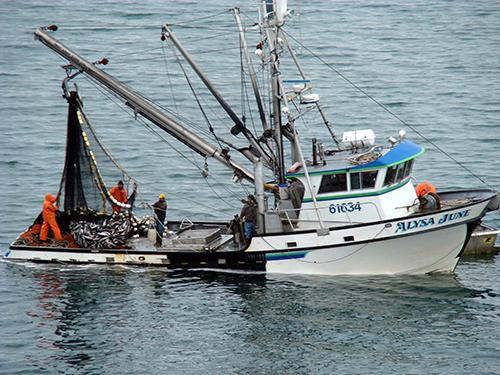
The following is the second in a two-part conversation facilitated between leading scholars affiliated with the National Socio-Environmental Synthesis Center (SESYNC). To read part one, click here.
Dr. Ray Hilborn: he’s kind of a big deal. People know him. So when we read his shrewdly written opinion piece published in the Proceedings of the National Academy of Sciences of the United States of America (PNAS), we knew it would generate much interest amongst SESYNC scholars and those concerned with the complex interactions between humans and the ecosystems in which they live. (We were right.)
SESYNC-funded scientists Dr. Taylor Ricketts and Dr. Brendan Fisher recently offered a few responses to Dr. Hilborn’s insights into the “Environmental cost of conservation victories”—among them:
- The notions that the implications of any conservation action are global, not just local, and that the linkages between terrestrial and marine systems in relation to food security aren’t often thought of in marine research are right on the ball
- But, possible shocks to the world’s fisheries as a result of marine protected area (MPA) governance efforts are not actually as worrying as the opinion piece suggests.
I asked Dr. Hilborn for some closing thoughts on the global implications of MPAs, as well as on my dialogue with Drs. Ricketts and Fisher. Below are excerpts from that conversation.
Melissa: Dr. Hilborn, thanks so much for taking the time to read over and respond to Taylor and Brendan’s feedback. Do you have any general comments?
Dr. Hilborn: Well, we’re in basic agreement that the marine conservation realm needs to widen its scope when assessing MPAs. Historically, studies have evaluated impacts on purely ecological elements such as biodiversity. But the interaction between MPAs and impacts elsewhere is not considered when the benefits of large marine closures are praised. What I’m saying with this paper is that in addition to biodiversity, and protections for marine landscapes, there are other, equally significant issues at stake—among them, food production.
Melissa: Taylor and Brendan raise two major questions in response to your opinion piece: one of them is spillover, or the capability of a community to “make up” for lost fishery yield by harvesting from the boundaries of an MPA. Would you say this is a fair point?
Dr. Hilborn: I’ll agree that the occurrence of MPA spillover does allow for stability in some local seafood production. But I’m talking specifically about large marine closures, and the concept of viable spillover is effectively limited to MPAs that are comparatively small, or to communities located on the perimeter of those regions. What about MPAs that are 2–8 times the size of California? My paper mentions Australia’s no-take area of 3.1 million square kilometers in the Coral Sea—that size is significant. That size does not lend itself to convenient mediation by boundary fishing for all affected communities. That’s the size that is most likely to result in the issues of alternative food production I’m describing.
The other important issue here is that many of these large MPAs are obviously in parts of the world where fisheries are well managed. When we do see a resultant reliance on surrogate sources of fish, those sources will almost always be from parts of the world where fisheries are poorly managed, such as Thailand, China, and Vietnam, and from aquaculture. It’s sort of a contagion effect: efforts to provide ecological protection in one area may actually give rise to intensified ecological degradation elsewhere.
Melissa: The other question Taylor and Brendan raise is related to social cost-benefit: that when we evaluate MPAs, we have to look at the “big picture,” not just one qualifier—in the case of your opinion piece, food production.
Dr. Hilborn: Again, the assertion here is quite reasonable and not dissimilar from what I’m saying in my paper. I’d emphasize that one piece of the puzzle, and a hugely important one, is an assessment of an MPA’s implications for food supplies. As I’ve written, the information on trade and environmental consequences of alternative food production is now available to calculate these trade-offs, but it’s just not currently being done. We can’t argue that comprehensive cost-benefit analyses are being conducted if we’re not taking a close look at the effect closing large portions of the ocean has on actions such as forest clear-cutting, pesticide application, water scarcity as a result of increased irrigation, and other agriculturally-related practices. We cannot afford to ignore the consequences of MPAs on our food production activities.
Melissa: For those interested in this subject, where should they go to learn more?
Dr. Hilborn: The new book The Perfect Protein gets into some of this conversation. They could also look into some of my lectures on YouTube. (Editor's note: One example is embedded below.)
That said, due to a lack of research on the subject, I’d encourage scholars to look at centers like SESYNC and NCEAS for opportunities to pursue this type of transdisciplinary synthesis study on marine conservation and food-based systems. These are questions worth answering.
Dr. Ray Hilborn is a former member of SESYNC’s External Advisory Board and a Professor of Aquatic & Fishery Sciences at the University of Washington.